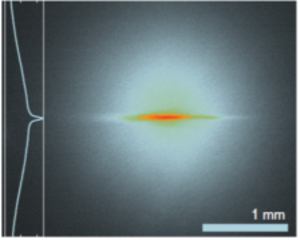Quantum gases in microgravity
Operating an experiment on cold atoms in free fall represents an ideal scenario to study the physics of these quantum systems with no disturbance from gravitational effects. On ground, the gravitational sag in trapped gases can be compensated, for example, by applying a magnetic field gradient for levitation. This however relies on the magnetic properties of the atomic species, prevents the use of magnetic fields as a free control or trapping parameter, and is usually limited to single species experiments.
If combined with recently developed methods to implement box-like potentials, microgravity is ideally suited to study quantum gases in almost perfectly homogeneous, undisturbed systems which are not available on ground. Among the interesting topics to be investigated are the phase transition to BEC, formation of domains in the BEC, or the interaction between the constituents of ultra-cold mixtures.

Related publications
C. Vogt et al: Evaporative cooling from an optical dipole trap in microgravity, Phys. Rev. A 101, 013634 (2020)
T. van Zoest et al.: Bose-Einstein Condensation in Microgravity, Science 328, 5985, 1540-1543 (2010)


 "
"